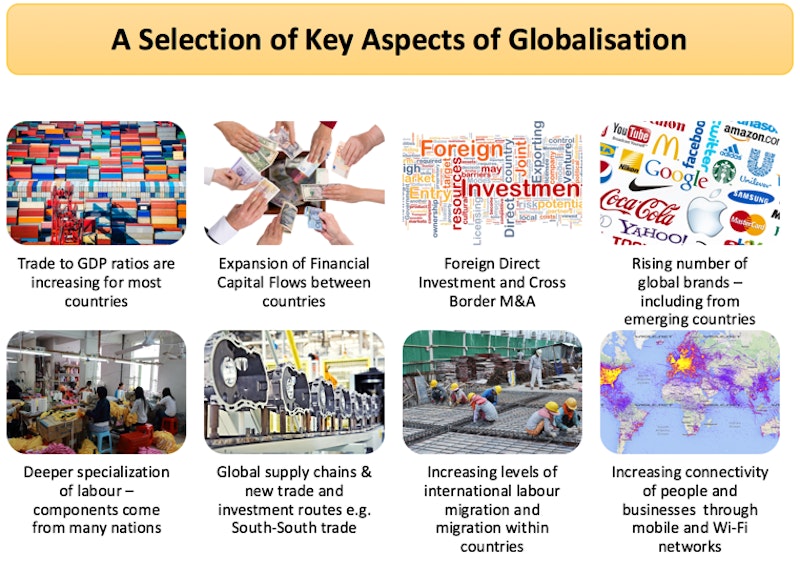Study Notes
Factors That Have Contributed to Globalisation
- Level:
- A-Level
- Board:
- AQA, Edexcel, OCR, IB, Eduqas, WJEC
Last updated 6 Sept 2022
A variety of factors have contributed to the process of globalisation. Some of the most important globalisation drivers are outlined below.

Containerisation
The costs of ocean shipping have come down, due to containerisation, bulk shipping, and other efficiencies. The lower unit cost of shipping products around the global economy helps to bring prices in the country of manufacture closer to those in export markets, and it makes markets more contestable globally
Technological change
Rapid and sustained technological change has reduced the cost of transmitting and communicating information – sometimes known as “the death of distance” – a key factor behind trade in knowledge products using web technology
Economies of scale
Many economists believe that there has been an increase in the minimum efficient scale (MES) associated with some industries. If the MES is rising, a domestic market may be regarded as too small to satisfy the selling needs of these industries. Many emerging countries have their own transnational corporations
Differences in tax systems
The desire of businesses to benefit from lower unit labour costs and other favourable production factors abroad has encouraged countries to adjust their tax systems to attract foreign direct investment (FDI). Many countries have become engaged in tax competition between each other in a bid to win lucrative foreign investment projects.
Less protectionism
Old forms of non-tariff protection such as import licensing and foreign exchange controls have gradually been dismantled. Borders have opened and average import tariff levels have fallen.
That said, it is worth knowing that, in the last few years, there has been a rise in non-tariff barriers such as import quotas as countries have struggled to achieve real economic growth and as a response to persistent trade and current account deficits.
Growth Strategies of Transnational and Multinational Companies
In their pursuit of revenue and profit growth, increasingly global businesses and brands have invested significantly in expanding internationally. This is particularly the case for businesses owning brands that have proved they have the potential to be successfully globally, particularly in faster-growing economies fuelled by growing numbers of middle class consumers.
You might also like

BUSS4 Manufacturing: Research Bullet 2 - Globalisation
15th June 2015

BUSS4 Manufacturing: Research Bullet 4 - Location
15th June 2015
UK Manufacturing - Globalisation
Topic Videos